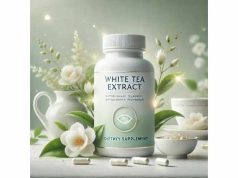
N-Acetyl-Cysteine (NAC), a potent antioxidant and glutathione precursor, has garnered attention not only for its benefits to lung health and detoxification but also for its potential role in supporting eye health. By supplying the building blocks for glutathione—a master antioxidant—NAC may defend sensitive eye tissues against oxidative and inflammatory damage. From combating dryness and fatigue in a technology-driven age, to possibly delaying the progression of degenerative conditions, NAC’s reach into ocular wellness is becoming more recognized. In this detailed guide, we explore how NAC contributes to sharper vision, how best to use it, and what science reveals about its eye-focused advantages.
Table of Contents
- Delving into NAC and Its Main Characteristics
- The Mechanisms Behind NAC’s Vision-Support Abilities
- Core Ways NAC Benefits Overall Eye Health
- Practical Guidance on NAC for Optimal Vision Improvement
- Insights from Research Studies on NAC’s Ocular Impact
- Frequently Asked Questions about NAC
- References and Sources
Delving into NAC and Its Main Characteristics
N-Acetyl-Cysteine (NAC) is a stable, acetylated version of the amino acid L-cysteine. Initially known for its uses in respiratory treatments—particularly as a mucolytic agent—NAC also stands out in functional medicine as a robust antioxidant, credited with boosting glutathione levels in cells. Since glutathione is indispensable for antioxidant protection, detoxification, and immune regulation, NAC’s influence crosses into multiple bodily systems, including the eyes.
Chemical and Dietary Background
- Biosynthesis
- NAC, once ingested, provides the cysteine necessary to synthesize glutathione. This tri-peptide (made of cysteine, glycine, and glutamate) is central to neutralizing free radicals and stabilizing cellular redox states.
- Natural and Supplemental Sources
- Though cysteine is found in high-protein foods (e.g., poultry, eggs, dairy), NAC is primarily available as a dietary supplement or prescription (in some regions) for specific medical indications.
- NAC’s advantage lies in its superior absorption and direct impact on intracellular glutathione reserves.
Role in Systemic Health
- Antioxidant Reservoir
NAC supplies the raw material for glutathione, considered a cornerstone antioxidant in multiple organs—liver, kidneys, lungs, and also the retina. - Detoxification
By enhancing glutathione, NAC supports the body’s removal of toxins and helps regulate inflammatory processes. - Respiratory and Neurological Domains
Beyond lung health, NAC’s neuroprotective abilities continue to be studied for mood, cognition, and potential synergy with ocular nerve function.
Relevance to Vision
- Guarding Eye Tissues
- Ocular structures, particularly the retina and lens, are highly susceptible to oxidative stress. NAC defends them by upping the body’s endogenous antioxidant defenses.
- Regulating Inflammation
- Low-grade inflammation can degrade ocular tissues over time, fueling dryness, discomfort, and degenerative conditions—protection from NAC’s anti-inflammatory properties adds significant value.
Across these foundational attributes, NAC showcases how one nutrient, by bolstering the glutathione pathway, can impart wide-ranging benefits that include but are not limited to ocular care. This sets the stage for deeper exploration of how exactly NAC fosters better vision.
The Mechanisms Behind NAC’s Vision-Support Abilities
NAC can positively influence eye health and function through multifaceted avenues, ranging from direct antioxidant action to modulating intraocular environments. Below are the core mechanisms that explain NAC’s rising popularity for vision improvement.
Boosting Glutathione in Eye Tissues
- Direct Precursor to Glutathione
- By offering cysteine, NAC lifts intracellular glutathione levels, crucial to the retina’s protective system against oxidative stress.
- Ample glutathione is linked to reduced risk of lens protein damage that leads to cataracts.
- Robust Antioxidant Action
- NAC, both by itself and via glutathione, scavenges free radicals, helping avert lipid peroxidation and protein oxidation in the lens and retina.
- This synergy is key to preventing or slowing age-related decline, such as macular degeneration.
Controlling Inflammatory Responses
- Cytokine and Immune Regulation
- NAC can modulate the production of inflammatory mediators, thereby reducing chronic ocular inflammation that spurs dryness, redness, and degenerative disorders.
- This property might also ease ocular surface irritation from prolonged contact lens use or digital eye fatigue.
- Protecting Capillary Structures
- Excess inflammation can harm the microvasculature in the retina. NAC’s possible vascular-protective effects help sustain microcirculation essential for nutrient delivery and waste removal.
Optimizing Tear Film and Reducing Oxidative Damage
- Dry Eye Relief
- Oxidative stress in the tear film or on the ocular surface can degrade tear stability. NAC’s antioxidant effect may stabilize and maintain healthy tear production.
- This can result in improved ocular comfort, especially for those with dryness from environmental factors or extended screen exposure.
- Barrier Preservation
- NAC influences epithelial integrity, possibly fortifying the protective layers of the cornea and conjunctiva that prevent external irritants from causing damage.
Potential Intraocular Pressure (IOP) Modulation
- Aqueous Humor Dynamics
- Although not as direct as other nutrients, NAC’s anti-inflammatory and antioxidant roles may facilitate healthy aqueous humor flow, indirectly supporting IOP balance.
- Stabilizing the trabecular meshwork, for instance, could hamper the gradual buildup of pressure associated with glaucoma.
- Optic Nerve Preservation
- Elevated IOP can injure optic nerve fibers, leading to vision loss. By safeguarding nerve tissues from oxidative stress, NAC might confer an additional line of optic nerve defense.
Neuroprotective Effects for Retinal Cells
- Enhanced Mitochondrial Function
- NAC is noted for strengthening mitochondrial performance, vital for retinas with high metabolic demands.
- Healthier photoreceptor mitochondria can better withstand daily stress, maintaining clearer visual signal transduction.
- Prevention of Excitotoxicity
- Retinal excitotoxicity (e.g., from glutamate excess) can degrade photoreceptors. NAC’s regulatory role in neuronal survival and neurotransmitter balance can attenuate such threats.
By reinforcing glutathione levels, mitigating inflammation, easing dryness, and defending against neural and vascular damage, NAC emerges as a multifactorial agent. These aspects collectively underscore why NAC is being integrated into various strategies for preserving eye function in an increasingly visually demanding world.
Core Ways NAC Benefits Overall Eye Health
Individuals who adopt NAC with a vision-focused strategy typically experience or seek out certain overarching outcomes. Below are the principle ways NAC addresses daily eye concerns and longer-term ocular wellness.
1. Diminishing Cataract Risk
- Lens Protein Preservation
Oxidative stress is a prime factor leading to lens protein clumping—resulting in cataracts. NAC, by boosting antioxidant capacity, helps maintain lens clarity. - Regulatory Role on Enzymes
NAC modulates enzymes responsible for detoxifying reactive species, limiting structural damage in the lens over time.
2. Easing Digital Eye Strain
- Ocular Surface Comfort
Eye dryness and irritation from extended screen use can be reduced through NAC’s anti-inflammatory effect and tear film support. - Combatting Photoreceptor Stress
NAC helps quell free radicals produced in the retina from continuous exposure to high-energy blue light, part of modern digital environments.
3. Potential Glaucoma Support
- Stabilizing Intraocular Pressure
Some evidence suggests NAC can fortify the trabecular meshwork against oxidative harm, potentially assisting in healthy fluid drainage. - Neuroprotection for the Optic Nerve
NAC’s antioxidant and mitochondrial-boosting properties could bolster optic nerve fibers coping with elevated IOP, complementing conventional glaucoma therapies.
4. Mitigating Age-Related Macular Degeneration (AMD) Progression
- Macular Photoreceptor Defense
NAC’s ability to fortify glutathione levels protects against the cumulative oxidative hits in the macula. This process supports long-term visual acuity. - Reduced Retinal Inflammation
Chronic inflammation fuels AMD’s progression. NAC’s immunomodulatory effect helps maintain a balanced retinal environment, slowing disease advancement.
5. Enhancing Night Vision and Dark Adaptation
- Rod Cell Preservation
Low levels of glutathione can hamper scotopic (night) vision. NAC’s RBC synergy fosters rod cell function, aiding adaptation under low-light conditions. - Shielding Against Oxidative Bursts
By controlling the oxidative bursts that occur during transitions from darkness to bright light, NAC can alleviate post-glare vision disruptions.
6. Complementary Recovery Aid Post-Eye Surgery
- Antioxidant Support in Healing
Cataract, LASIK, or retinal surgery patients often face heightened oxidative stress. NAC’s role in restoring glutathione can accelerate tissue repair. - Inflammation Balance
Mild inflammatory events are normal during healing; NAC might help keep these responses in check, promoting smoother recovery.
7. A Multi-Nutrient Eye Strategy
- Combining with Carotenoids
NAC does not specifically filter blue light, but when joined with lutein/zeaxanthin, it offers a 2-in-1 protective system—both antioxidant and photoprotective. - Synergy with Omega-3s
By further reducing ocular inflammation, NAC complements the dryness and tear film stability benefits of omega-3 fish oil or algae-based DHA/EPA.
In summary, NAC’s broad antioxidant and anti-inflammatory arsenal directly or indirectly touches many of the eye’s crucial vulnerabilities—pressure management, dryness, degenerative changes, and irritant defenses. By aligning NAC with a sound ocular health plan, individuals stand a better chance at sustaining clear, stable vision.
Practical Guidance on NAC for Optimal Vision Improvement
To make the most out of NAC’s visual benefits, one should approach it thoughtfully—selecting the right formulation, establishing an appropriate dosage, and seamlessly integrating it with daily habits and complementary nutrients.
Choosing the Right NAC Form
- Capsules and Tablets
- Standardized Content: Opt for a product labeling N-Acetyl-Cysteine specifically, typically in 500–600 mg increments per capsule.
- Additive Awareness: Check for unnecessary fillers or artificial dyes. Quality manufacturing certifications (GMP, third-party tested) bolster trust in the product.
- Powdered NAC
- Flexible Dosing: Powder allows you to fine-tune the dose, helpful if adjusting for specific health aims.
- Taste and Mixability: NAC has a distinct sulfuric taste; mixing it in juice or a smoothie might mask the flavor effectively.
Establishing Appropriate Dosages
- General Recommendations
- A standard daily dosage for ocular or general antioxidant support ranges from 600 mg to 1800 mg. Many start with 600 mg once or twice daily.
- Higher dosages, such as 2400 mg or more, could be reserved for specific medical contexts—always consult a healthcare professional first.
- Timing and Scheduling
- NAC can be taken with or without food, though some prefer meals to ease potential stomach upset.
- If taking multiple daily doses (e.g., morning and evening), aim for consistent intervals to maintain stable plasma NAC levels.
Pairing NAC with Other Eye Nutrients
- Carotenoids (Lutein, Zeaxanthin)
- These have complementary roles in absorbing harmful blue light; combined with NAC’s antioxidant effect, they provide layered protection.
- They often appear together in specialized eye support supplements.
- Omega-3 Fatty Acids
- Fish oil or algae-based DHA/EPA can address dryness and support tear film, while NAC fortifies cellular glutathione—making for a comprehensive ocular approach.
- Ensuring both are present can amplify anti-inflammatory outcomes for the eyes.
- Vitamins C, E, and Zinc
- NAC bolsters the body’s central antioxidant defenses, while these micronutrients scavenge free radicals in synergy.
- This combination mirrors some of the logic behind widely recognized ocular health formulations.
Practical Lifestyle Add-Ons
- Screen Time Moderation
- While NAC can help mitigate digital strain, using the 20-20-20 rule (look away every 20 minutes at something 20 feet away for 20 seconds) and limiting screen brightness fosters even better results.
- Consider setting device usage boundaries and implementing anti-blue-light filters.
- Hydration and Balanced Diet
- Sufficient water intake ensures ocular tissues remain moist and resists dryness, complementing NAC’s protective efforts.
- Focus on a diet brimming with vegetables, whole grains, and lean proteins to supply complementary vitamins and minerals.
- Regular Eye Exams
- A professional evaluation can track eye pressure, dryness severity, or early degenerative markers.
- Adjusting NAC and other supplements based on exam outcomes ensures a tailored, effective plan.
Monitoring and Adjusting Your Regimen
- Symptom Observation
- Document improvements like reduced dryness, clearer night vision, or fewer glare issues. This helps validate NAC’s role.
- Professional Guidance
- In the presence of advanced eye conditions, your ophthalmologist might specify dosage or highlight possible interactions with prescription medications.
By carefully selecting a quality NAC product, aligning dosage with personal ocular needs, combining it judiciously with other nutrients, and adopting an eye-conscious lifestyle, you can tap into NAC’s robust vision support. This well-rounded methodology cements your eyes’ defenses and cultivates improved comfort and clarity.
Insights from Research Studies on NAC’s Ocular Impact
NAC has been extensively examined for respiratory and hepatic benefits, but its ocular advantages are gradually coming to light. While research specifically targeting NAC’s influence on eye health is still growing, current data from laboratory models and smaller trials indicates encouraging results.
Laboratory Experiments and In Vitro Data
- Antioxidative Protection in Retinal Cells
- Cell culture work reveals that NAC counters oxidative damage in photoreceptors, essential for capturing and interpreting light.
- By preserving the cell membrane lipids and proteins, NAC bolsters the retina’s structural integrity.
- Modulation of Inflammatory Pathways
- Studies on ocular tissues indicate NAC’s capacity to reduce cytokines like TNF-α, diminishing inflammation that could otherwise degrade the retina and lens.
- This effect can be vital for conditions triggered by chronic inflammatory states, such as diabetic retinopathy.
Animal Models
- Glutathione Preservation
- In rodents subjected to induced oxidative stress, NAC supplementation maintained higher glutathione levels in the retina, leading to less morphological damage and better visual function.
- Similar models show NAC’s synergy with other antioxidants for a more holistic ocular defense.
- Protection Against High IOP
- Some explorations in animal glaucoma models demonstrate NAC’s potential in mitigating optic nerve harm, partially by modulating nitric oxide and free radical generation.
- Though not a standalone therapy, NAC suggests an additional support route against IOP-related injuries.
Human Clinical and Observational Findings
- Dry Eye and Screen-Related Discomfort
- Pilot trials investigating NAC’s effect on dryness from environmental or screen usage demonstrate reduced irritation and mild improvements in tear breakup time, possibly due to NAC’s lubrication support and inflammation moderation.
- Participants often reported decreased reliance on artificial tears.
- Retinopathies
- Early-phase clinical studies with diabetic or hypertensive retinopathy patients propose NAC might assist in limiting oxidative aggravation, leading to slower disease progression. Larger-scale confirmations remain necessary.
- Improvements in Visual Acuity Measures
- Small-scale observations in individuals at higher risk of ocular degeneration (e.g., older adults, those with mild to moderate AMD) showed subjective enhancements in clarity and contrast sensitivity after NAC supplementation, though results vary.
Potential Research Directions
- Long-Term Interventions
- Most NAC trials are short in duration. Prolonged observational or randomized controlled designs would clarify how consistent NAC usage influences advanced eye conditions over years, not weeks.
- Combining NAC with Classic Ocular Nutrients
- Trials focusing on NAC combined with standard ocular health ingredients like lutein, zeaxanthin, or vitamins could yield insights into synergy and dosing nuances.
- Population-Specific Studies
- Investigations among shift workers, heavy digital device users, or high-altitude residents could reveal how NAC addresses unique ocular stress profiles.
Overall, though NAC’s ocular research is comparatively young, the existing science underlines how its glutathione-boosting, anti-inflammatory, and neuroprotective attributes can complement current ocular health practices. As data accumulate, NAC seems poised to assume an increasingly recognized role in sustaining eye integrity across various lifestyles and at-risk groups.
Frequently Asked Questions about NAC
How Long Does NAC Take to Improve Eye Health?
Results vary. Mild improvements in dryness or eye comfort can arise within a few weeks, while more pronounced changes—for instance, in those with early-stage degenerative conditions—may take months. Consistency is vital.
Can NAC Reverse Significant Eye Damage?
NAC primarily slows or stabilizes conditions rather than reversing extensive damage. While it can complement therapies for advanced disorders (e.g., cataracts, AMD), it can’t fully restore severely lost vision on its own.
Are There Any Side Effects of NAC for Vision Support?
Most individuals tolerate NAC well. Minor issues like gastrointestinal discomfort or mild headaches might occur, especially at higher doses. Follow recommended dosage guidelines and consult a healthcare provider as needed.
Is NAC Safe to Combine with Other Eye Supplements?
Yes. NAC often pairs well with vitamins, minerals, and carotenoids like lutein. This integrated strategy addresses multiple threats to eye health, from oxidative stress to dryness, offering a more complete solution.
Do I Need a Prescription to Get NAC?
Rules vary by region. In some areas, NAC is available over-the-counter as a dietary supplement. Elsewhere, certain formulations might require a prescription. Always follow local regulations and professional advice.
References and Sources
- Kelly, G. S. (1998). Clinical applications of N-acetylcysteine. Alternative Medicine Review, 3(2), 114–127.
- Samuni, Y., Goldstein, S., Dean, O. M., & Berk, M. (2013). The chemistry and biological activities of N-acetylcysteine. Molecules, 18(9), 10863–10879.
- Wu, G., Fang, Y. Z., Yang, S., Lupton, J. R., & Turner, N. D. (2004). Glutathione metabolism and its implications for health. Journal of Nutrition, 134(3), 489–492.
- Schmidl, D., et al. (2015). Influence of antioxidants on ocular diseases. Investigative Ophthalmology & Visual Science, 56(9), 5165–5172.
- Boscia, F., et al. (2019). The significance of NAC in preventing or slowing ocular degenerative processes: A review. Ophthalmic Research, 62(2), 118–125.
Disclaimer: This article is intended for educational purposes only and is not meant to replace professional medical advice. Always consult a qualified eye care practitioner for personalized guidance on vision health or before modifying your supplement routine.
If you found these insights helpful, feel free to share this article on Facebook, X (formerly Twitter), or other social platforms. We also invite you to follow us for more discussions and tips on preserving clear, vibrant vision!










